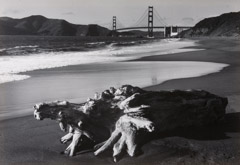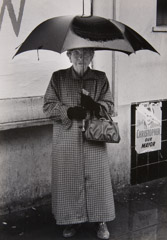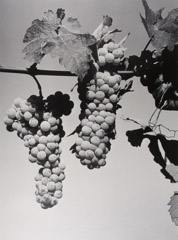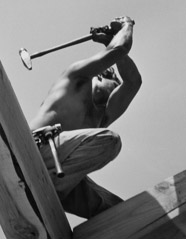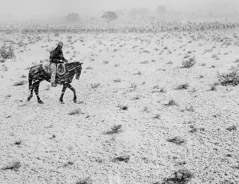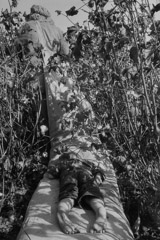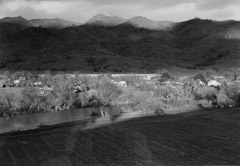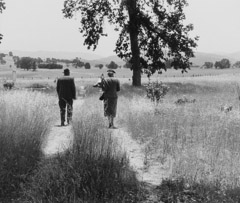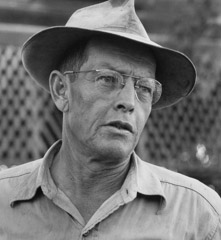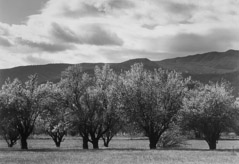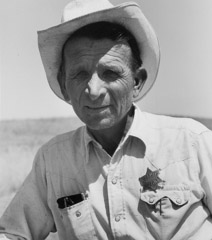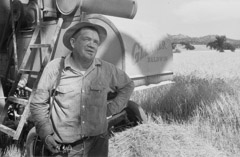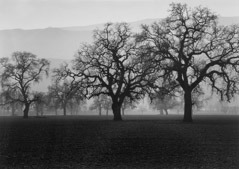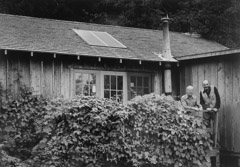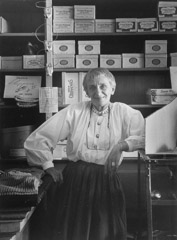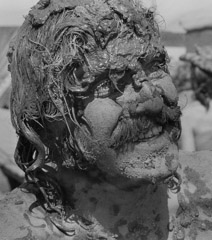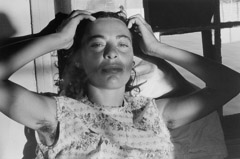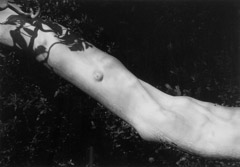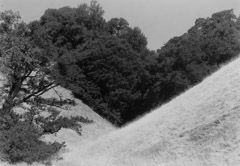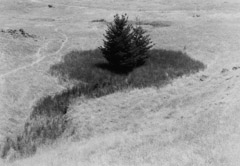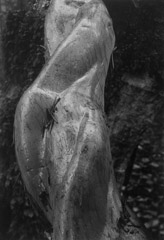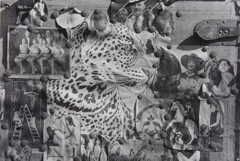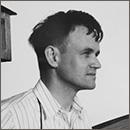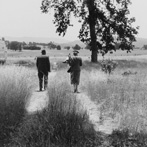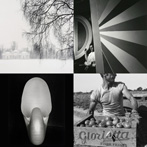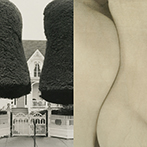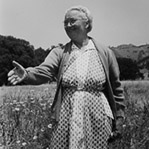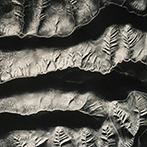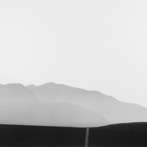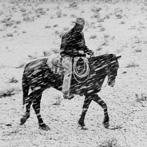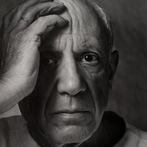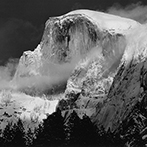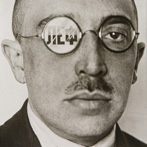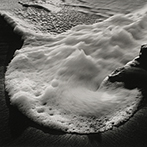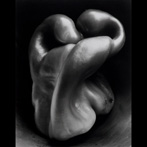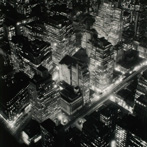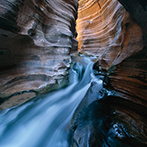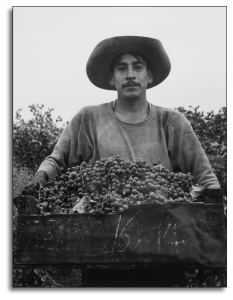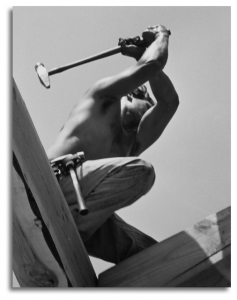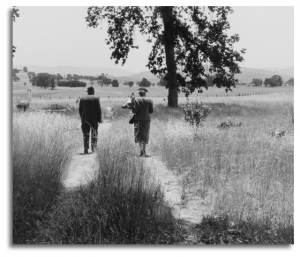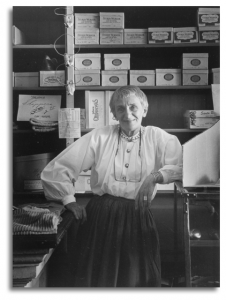Pirkle Jones
Pirkle Jones (1914 – 2009)
The former National Academy for the Arts fellow and San Francisco Arts Commission honor recipient, recorded the beauty and culture of California. His sensitivity to the the land reflected the tradition of Ansel Adams, Edward Weston and Minor White, all of whom he knew well. His work is held by numerous museums and collectors. The major archive of his work is held at the University of California Santa Cruz.
Born in 1914 in Shreveport, LA, Jones’ career began with the purchase of a Kodak Brownie when he was seventeen years old, commenced in the 30’s when his photographs were both published and exhibited internationally in Pictorialist salons and publications. He served for four years in the US Army during WWII, with the 37th Division at Guadalcanal, Munda, and Bouganville in the South Pacific. In 1946, after his war service Jones entered the first class in photography at the California School of Fine Arts (now the San Francisco Art Institute). There he met a community of artists—among the instructors were Ansel Adams, Minor White, Edward Weston and Dorothea Lange, – that would help to shape and define his career. Jones also worked as Ansel Adams’ assistant (1947-1953) and the two photographers forged a life-long friendship. Dorothea Lange approached him in 1956 to collaborate on a photographic essay Death of a Valley. The essay chronicled the demise of the Berryessa Valley, which disappeared when the Monticello Dam was completed. Jones and Lange photographed during the community’s final year, as a way of life experienced for generations came to an end. Jones later described the project with Lange as “one of the most meaningful photographic experiences of my professional life.” In 1958, Pirkle Jones was documenting the building of Candlestick Park and the Paul Masson Winery in Saratoga, California for the architect John Bolles. In 1959, collaboration with Ansel Adams developed to produce an expanded essay on “The Story of a Winery” completed in 1963; illustrating the growth of a new industry as well as telling the story of winemaking. The pair produced a group of images that ultimately became a publication and an exhibition, which the Smithsonian Institution toured.
Pirkle Jones engaged in several collaborations with his late wife, the writer-photographer Ruth-Marion Baruch, over the course of their 49 year marriage. In 1961, the pair was drawn to a small, forgotten town located on the banks of the Sacramento River and the former gateway to the gold country. Entitled Walnut Grove: Portrait of a Town, it became an essay of discovery for both photographers and was exhibited at the San Francisco Museum of Modern Art. A landmark documentary series began in 1968 when Ruth-Marion was introduced to Kathleen Cleaver, wife of Black Panther party leader Eldridge Cleaver. Jones and Baruch photographed the Black Panthers from July through October 1968 in the Bay Area with the goal of “creating a better understanding of the Black Panthers.” An exhibition at the De Young Museum drew over 100,000 people. The two photographers overcame many obstacles to produce The Vanguard: A Photographic Essay on the Black Panthers,” which was published by Beacon Press in 1970. Seasoned by that experience, Pirkle found himself drawn to a houseboat community on the Sausalito waterfront, known as Gate 5. A mecca for free-spirited people seeking alternative life-styles, Gate 5 became a unique photographic odyssey for the mature photographer. Ever drawn to his own backyard, Jones’ mature eye also captured candid street scenes and workers at their jobs, the great city of San Francisco and the grand northern coast of California. In the last two decades, Pirkle Jones returned to the challenge of nature, to create order in the mysterious and chaotic natural world, which he has inhabited for so long. In 1978 he produced a Rock series followed by a Salt Marsh series and then by the Mt. Tamalpais series . He has been on an interior voyage of discovery and he wrote, “After all these years I [had] finally found some things in nature in which I could find some satisfaction…Images that I feel are my own. “Pirkle Jones: Sixty Years in Photography” the artist’s retrospective, of more than 120 works was mounted by the Santa Barbara Museum of Art in 2001, with the companion book Pirkle Jones California Photographs published by Aperture. A documentary by filmmaker Jane Levy Reed, Pirkle Jones Seven Decades Photographed debuted in 2009.
![]()
The work of Pirkle Jones is featured in these exhibitions.
(Select the image to view the exhibition page)
The work of Pirkle Jones is featured in these Theme collections.
(Select the image to view the theme page)
Pirkle Jones - Forged His Own Identity While Collaborating with Ansel Adams and Dorothea Lange
Pirkle Jones was a student in the first class taught by Ansel Adams at the California School of Fine Arts in 1946, but their relationship quickly moved beyond that of student-teacher and became a lasting friendship and professional collaboration. When Jones married fellow student, Ruth-Marian Baruch, in 1949, the ceremony was held in Adams’ living room.READ ENTIRE ARTICLE
Pirkle Jones' 100th Birthday
January 2, 2014
Pirkle Jones was born on January 2nd in 1914.
The former National Academy for the Arts fellow and San Francisco Arts Commission honor recipient, recorded the beauty and culture of California. His sensitivity to the the land reflected the tradition of Ansel Adams, Edward Weston and Minor White, all of whom he knew well.
Lumière’s inaugural exhibition was titled: Pirkle Jones and Friends.
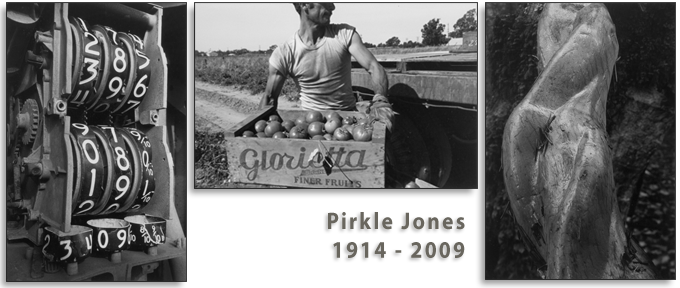 © Pirkle Jones
© Pirkle Jones
AJC, Dead-On, First Try
Below is an excerpt of a review from the Atlanta Journal and Constitution.
To read the entire review please access the AJC web site.
DATE: May 27, 2007
PUBLICATION: Atlanta Journal-Constitution
BYLINE: CATHERINE FOX
TITLE: Dead-on, first try. New gallery’s gathering of artist’s, mentors’ work clicks
EXHIBITION : Pirkle Jones and Friends
VERDICT: This illuminating exhibition is the auspicious debut of a new photography gallery.
Talk about being in the right place at the right time. Pirkle Jones’ decision to study photography at the California School of Fine Arts (now the San Francisco Art Institute) in 1946 brought him into a charmed circle of mentors that included photography masters Ansel Adams, Edward Weston and Dorothea Lange. They breathed the same intellectual air, looked at the same landscape, even worked together as peers.
Those relationships and their influence are evident in “Pirkle Jones and Friends,” the inaugural exhibition of Lumiere, a new photography gallery owned by Atlanta collector Bob Yellowlees.
They do so literally in Jones’ photos of his friends, and in those from two major collaborative projects: “The Story of a Winery,” a commercial project done with Adams, and “Berryessa Valley,” a documentary effort with Lange that chronicled the year before a portion of the Napa County area was dammed and flooded.
Both efforts show off the 93-year-old artist’s technical mastery, but “Berryessa” was more important to him personally and professionally. His empathy for both the people and the land shines through in the selection of vintage prints on view, and he would repeat that immersive approach in future projects.
Photos from his series on Gate 5, a section of Sausalito Marina that was home to a countercultural community, are included here. Abstracted views of nature and quirky shots taken at flea markets attest to his versatility.
Jones’ depth and skill are obvious. More difficult to discern is where his mentors’ influence leaves off and his own personality takes over.
Second-generation artists frequently face this issue when it comes to finding their art-historical niche. Jones’ solution, it seems, was not to worry about it — to do the work he wanted to do in the manner that was most meaningful to him. The many memorable photographs in the show speak for themselves.
Pirkle Jones and Friends, Gallery Talk with Jennifer McFarland
May 23, 2007
Lumière
Jennifer McFarland, Pirkle Jones’ longtime assistant provided insight into the collaborative work of Pirkle Jones, Ansel Adams & Dorothea Lange.


